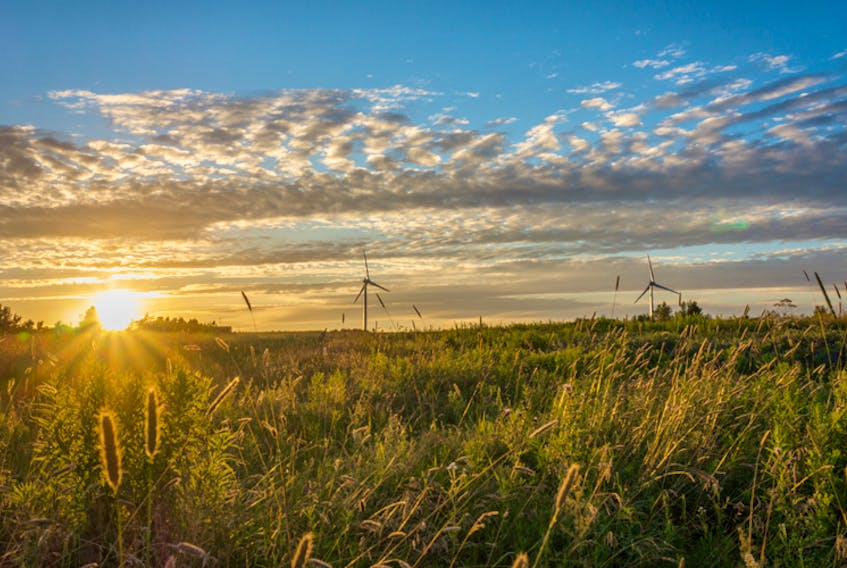Outside In is a five-part series that delves into the global issues affecting business in 2019.
Amherst is a windy place.
Located at the head of the Bay of Fundy and the Cumberland Basin, the area has proven popular with wind developers.
There’s a 16-turbine wind farm on the Tantramar Marsh. Operated by Capstone Infrastructure Corporation, it produces 32 megawatts of power.
There’s also a six-megawatt, two-turbine project — the Amherst Community Wind Project — just outside the town.
Andy MacCallum is vice-president of development for Natural Forces, the company that built the two turbines in 2016 in conjunction with the Assembly of Nova Scotia Mi’kmaq Chiefs.
The turbines have the capacity to power 1,892 homes while offsetting 10,606 tonnes of carbon dioxide annually.
“As a province, Nova Scotia has been very aggressive with the development of wind energy, and Nova Scotia Power and Emera still see the benefits of wind power,” MacCallum said.
“If you look at this province and compare it with others, our percentage of wind is quite high. That has resulted in lots of economic development.”
While Natural Forces itself is based in Halifax, its seven projects have enabled an expanded presence in communities and bring what MacCallum described as significant environmental benefits through renewable energy.
He said all the wind projects are on target for power generation.
According to MacCallum, wind energy depends on several factors, including proximity to existing electrical and civilian infrastructure plus the availability of sufficient wind to power the turbines.
He said wind and other alternative energy projects are making a difference by reducing the amount of coal used by Nova Scotia Power and cutting back on greenhouse gas emissions.
“There was a time when more than 80 per cent of the power generated in Nova Scotia came from coal. Today, it’s a much lower number,” MacCallum said.
Nova Scotia Power figures indicate 29 per cent of the electricity in Nova Scotia in 2017 came from renewable energy resources. Of that, 19 per cent was generated by wind, up from just one per cent in 2007.
The power company is on its way to achieve the 40 per cent renewable requirement by 2020.
As strong as those numbers are, MacCallum sees room for growth.
“Nova Scotia Power is moving toward a smarter grid that can be more resilient, and wind can be part of that. Compared to several years ago, the price of wind has dropped. The cost of building wind is much lower than it was two or three years ago because turbines have become more efficient. They’re taller and the generators are much more efficient than before. Right now, we’re seeing wind prices that are comparable, if not cheaper, than coal.”
What does the future hold for energy in Atlantic Canadian?
Click the photos or headlines to here what those in the field have to say.

VIDEO: ‘There is opportunity on the horizon,’ says N.L.-based energy entrepreneur

VIDEO: Muskrat Falls hydro project weighs on region










